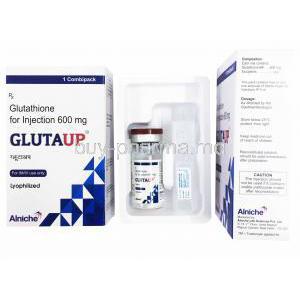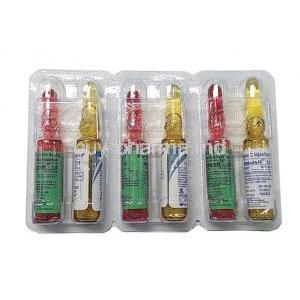Silydoc Q10
- I. Introduction to Silydoc Q10
- II. Composition of Silydoc Q10
- III. How Silydoc Q10 Works
- IV. Uses of Silydoc Q10
- V. Off-Label Uses of Silydoc Q10
- VI. Dosage and Administration
- VII . Common and Rare Side Effects
- VIII. Important Precautions and Warnings
- IX. Overdosage and Its Management
- X. Storage, Handling, and Administration Precautions
I. Introduction to Silydoc Q10
Silydoc Q10, a supplement, combines the liver-protecting benefits of Silymarin with the energy-boosting properties of Coenzyme Q10. This unique blend works to improve liver health and increase energy levels. The discovery of Silydoc Q10 resulted from research in herbal medicine and cellular biology. Silymarin was first extracted from Milk Thistle in the 1960s, while Coenzyme Q10 was recognized for its role in energy production around the same time. The combination of these two components in Silydoc Q10 represents an advancement in the field of nutraceuticals. In medicine, Silydoc Q10 is highly valued for its diverse therapeutic effects. It can help with conditions such as liver problems and chronic fatigue, playing a crucial role in comprehensive health management.
II. Composition of Silydoc Q10
A. Key. Their Functions: Silymarin Functions as a powerful antioxidant shielding liver cells against harm. Coenzyme Q10: Vital for producing ATP, thereby boosting energy levels.
B. Other ConstituentsBesides its components, Silydoc Q10 may include additives that improve its absorption and durability, ensuring maximum effectiveness.
C. Understanding Coenzyme Q10Coenzyme Q10 plays a role in the electron transport chain, a crucial stage, in aerobic cellular respiration. Its significance goes beyond energy generation; it also provides antioxidant benefits by safeguarding cells from oxidative stress.

III. How Silydoc Q10 Works
Silydoc Q10 works in two ways: it helps stabilize cell membranes and promotes the synthesis of ATP, creating a healthy environment for cells. By improving function, Silydoc Q10 boosts energy levels within cells, leading to increased physical endurance and improved cognitive abilities. The liver protective benefits of Silydoc Q10 are significant as it not only improves liver function tests but also aids in the regeneration of the liver in individuals with hepatic disorders.
IV. Uses of Silydoc Q10
A. Silydoc Q10 is often recommended by doctors due to its effects on the liver, particularly for conditions like fatty liver disease, hepatitis, and cirrhosis. It helps improve liver health by protecting against damage and aiding in cellular repair processes12.
BSilydoc Q10 indeed contributes to liver health by safeguarding against damage and assisting in cellular repair processes12.
C. In terms of overall health, Silydoc Q10 plays a role in enhancing heart efficiency and lowering the risk of lipid peroxidation, which is crucial in preventing artery disease3.
V. Off-Label Uses of Silydoc Q10
A. Silydoc Q10 has been studied for its potential effects on brain health, particularly in slowing down the advancement of conditions like Alzheimer’s disease and Parkinson’s disease. Research suggests that it may play a role in protecting against mitochondrial dysfunction and oxidative stress associated with these neurological disorders1.
B. Studies have indeed found that Silydoc Q10 can help regulate blood sugar levels, showing promise in the management of diabetes. CoQ10 is critical for cellular energy production and protection against oxidative stress, which may contribute to its beneficial effects on blood sugar regulation23.
C. When it comes to skincare, applying Silydoc Q10 has been associated with several benefits:
- It acts as an antioxidant, protecting the skin from oxidative damage caused by free radicals such as UV radiation and pollution.
- CoQ10 supports cellular regeneration and helps restore skin health.
- It may reduce the appearance of wrinkles and signs of aging.
- CoQ10 also plays a role in energy production within skin cells456.
VI. Dosage and Administration
The ideal amount of Silydoc Q10 to take depends on the condition being addressed, falling between 100 and 200 mg daily. It is recommended to consume Silydoc Q10 with meals to improve its absorption and effectiveness. Adjustments in dosage might be needed for adults, individuals with kidney issues, or those on specific medications.

VII . Common and Rare Side Effects
- Common Side Effects Overview; While generally well received some people may encounter stomach issues like indigestion, queasiness or upset stomach well as headaches and skin irritations.
- Identification of Uncommon yet Serious Side Effects: In cases, Silydoc Q10 might trigger liver damage, allergic responses, or severe skin problems. Immediate medical attention is necessary if these issues arise.
- Handling Side Effects: Most side effects are mild and temporary. Proper hydration and dietary changes can help ease stomach-related symptoms. It is recommended to seek advice from a healthcare professional for severe adverse reactions.
VIII. Important Precautions and Warnings
A. Interactions with Other Medications
Silydoc Q10 may interact with anticoagulants, antidiabetics, and certain chemotherapy drugs, potentially altering their effects. It is crucial to consult a healthcare professional before combining Silydoc Q10 with other medications.
B. Contraindications
Individuals with known hypersensitivity to Silydoc Q10's components, pregnant women, and nursing mothers should avoid its use unless under direct medical supervision.
C. Precautions for Specific Populations
- Administration to Elderly: The elderly may require dose adjustments due to potential changes in drug metabolism and sensitivity.
- Administration to Pregnant Women and Nursing Mothers: Due to the lack of extensive research in these populations, caution is advised when administering Silydoc Q10.
- Administration to Children: The safety and efficacy of Silydoc Q10 in pediatric patients have not been firmly established.
IX. Overdosage and Its Management
Symptoms of Taking Much Silydoc Q10: If you take too much Silydoc Q10, you may experience issues like stomach discomfort, tiredness, and trouble sleeping.
What to Do Away and Antidotes: If you accidentally take too much, it's best to seek symptomatic and supportive care. Consider using lavage or activated charcoal within the first hour of ingestion.
Managing the Situation in the Long Run: It is recommended to keep an eye on your liver function tests and kidney health after an overdose, along with providing support as needed.
X. Storage, Handling, and Administration Precautions
Storage Guidelines: It is important to store Silydoc Q10 in a cool, dry place away from direct sunlight and moisture to maintain its effectiveness and longevity.
Safety Precautions for Handling: Handle Silydoc Q10 carefully to avoid any contamination. Always follow the recommended dosage precisely. Seek advice from a healthcare professional before making any changes.
Disposing of Expired Product: When disposing of Silydoc Q10, it is important to do so responsibly. Avoid flushing medications down the toilet or pouring them into drains unless instructed otherwise. It's best to contact your waste management for proper disposal instructions.
















